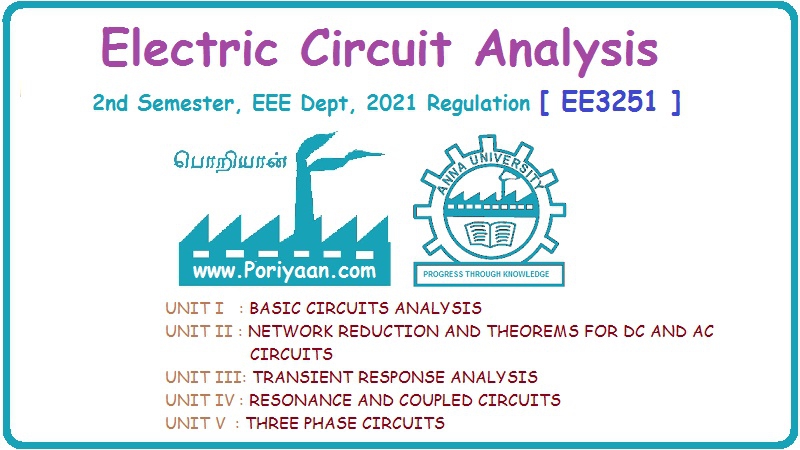Electric Circuit Analysis: Unit I: a. Introduction
Introduction
Electric Circuit Analysis
In electrical circuits, we can classify the circuit elements mainly as (a) active elements (energy sources) (b) passive elements
Unit-I
Introduction
CLASSIFICATION OF CIRCUIT ELEMENTS
In
electrical circuits, we can classify the circuit elements mainly as
(a)
active elements (energy sources)
They
are voltage and current sources.
Example:
Generators, Vacuum tubes, transistors etc.
(b)
passive elements :
These
elements either dissipate energy in the form of heat or store energy.
Example:
R, L and C. R dissipates energy in the form of heat. L stores energy in its
magnetic field. C stores energy in its electrostatic field.
ELECTRICAL NETWORK
The
connection of passive and active elements by means of conductors is called an
active network. If the active sources are absent, it is called passive network.
LUMPED AND DISTRIBUTED ELEMENTS
Physically
separate elements such as resistors, capacitors and inductors are called lumped
elements.
A
distributed element is one which is not separable for electrical purposes. A
transmission line has distributed resistance, capacitance and inductance along
its length.
BILATERAL AND UNILATERAL ELEMENTS
In
a bilateral element, the voltage current relation is the same for current
flowing in either direction. A unilateral element has different relations
between voltage and current for the two possible directions of current.
Example
for bilateral elements: resistor, inductor and
capacitor.
Example
for unilateral elements: vacuum tubes, silicon
diodes, metal rectifiers etc.
LINEAR AND NON-LINEAR ELEMENTS
An
element is said to be linear, if it satisfies the linear voltage-current
relationship. It means that for linear elements, the relation between V and I
is linear. For example the current passing through a resistor is proportional
to the voltage applied. All elements which do not satisfy the linear voltage -
current relationship are called non-linear.
Electric Circuit Analysis: Unit I: a. Introduction : Tag: : Electric Circuit Analysis - Introduction
Related Topics
Related Subjects
Electric Circuit Analysis
EE3251 2nd Semester 2021 Regulation | 2nd Semester EEE Dept 2021 Regulation
